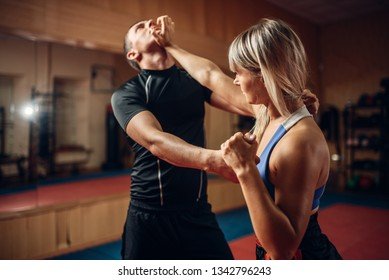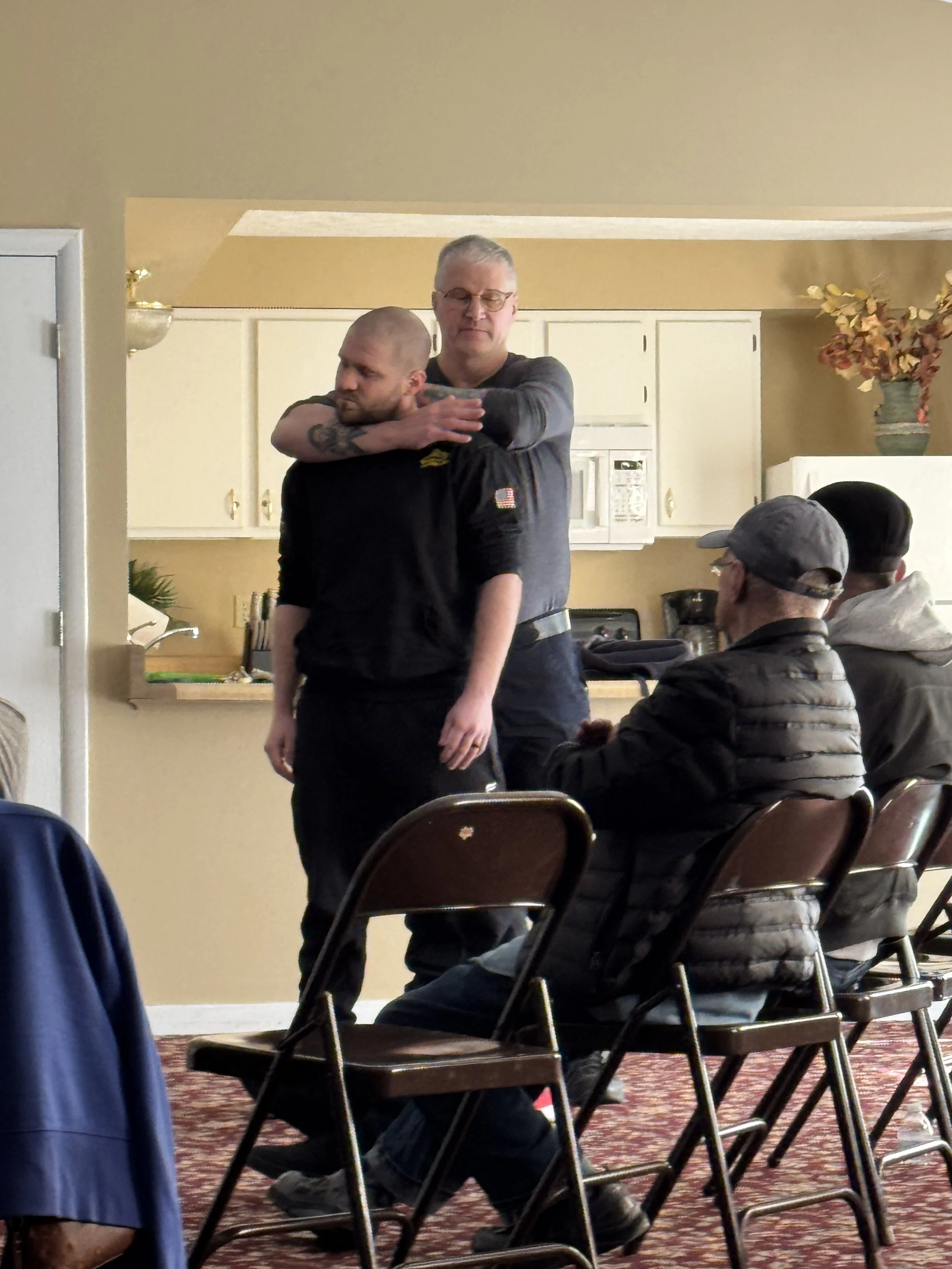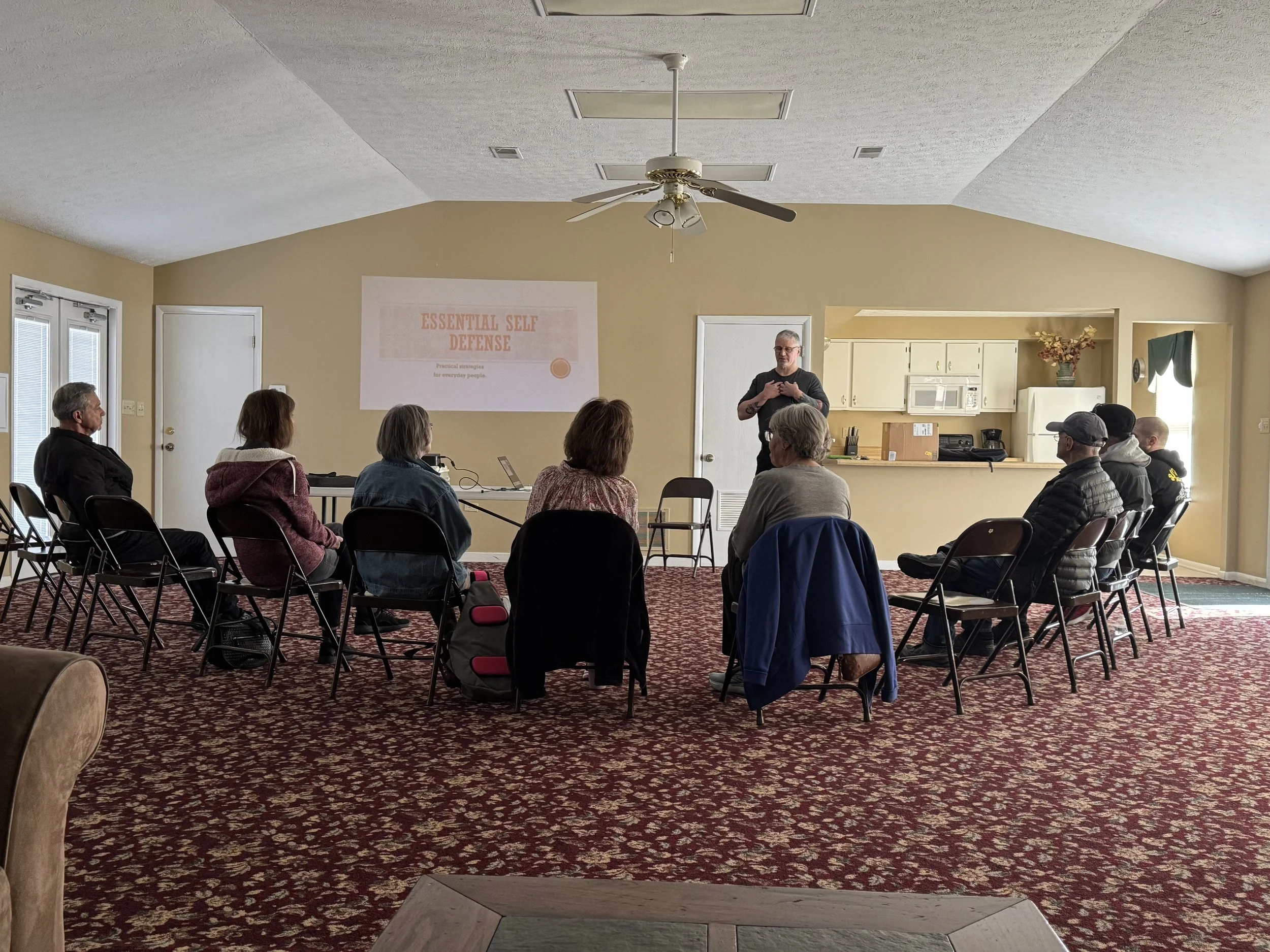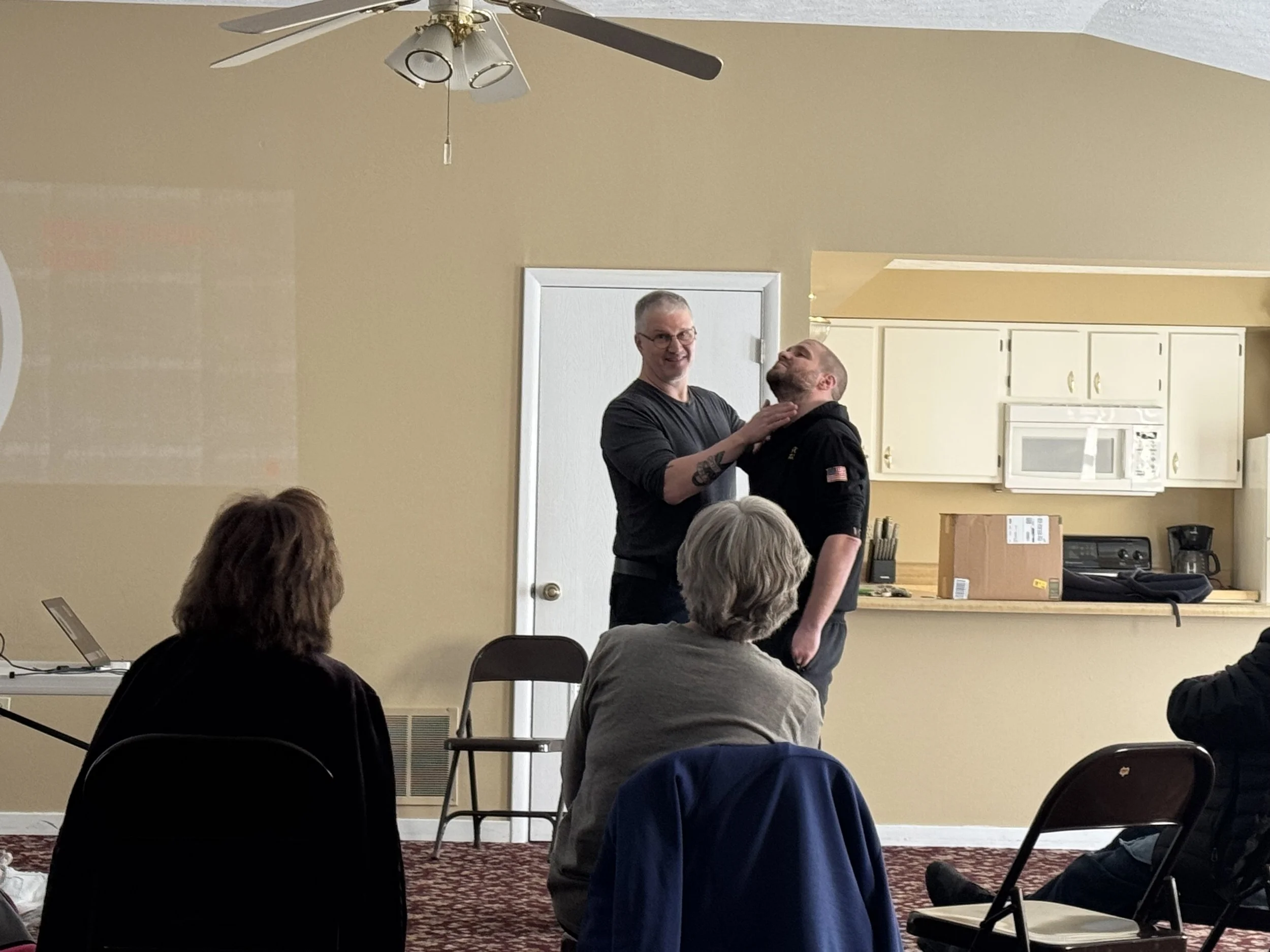
Get Started
*
Get Started *
Click on our facebook link for photos of our recent classes
1) As a 14-year veteran police officer, I bring a wealth of experience and insight into law enforcement practices. My knowledge of investigation techniques, community engagement, and collaboration with various agencies is invaluable.
In recent years I have seen people, both civilians and law enforcement, struggle against an aggressive legal system targeting them after they have justifiably and successfully used force to defend themselves or effect an arrest. My goal is to help those people.
I can help in 3 ways.
Self-defense lessons for individual citizens.
Learning self-defense is a valuable skill set that empowers individuals to protect themselves in potentially dangerous situations. Self-defense is not just about physical techniques; it encompasses building awareness, confidence, and preparedness for various situations. Regardless of age or gender, self-defense training can provide peace of mind and the skills necessary to protect oneself.
The classes I teach focus more on recognizing danger and avoiding it. I do review some basic physical combat skills most of the class reviews the importance of situational awareness. This can help you recognize potential threats and avoid dangerous situation. My 60 minute class is full of tips that could help you avoid an incident that might negatively affect the rest of your life.
2) Active Shooter Defense Training and Preparation.
Active shooter defense refers to the strategies and practices implemented to prepare for, respond to, and recover from incidents involving an armed individual intent on causing harm in a public or private space, such as schools, workplaces, or other crowded environments. Run, Hide, Fight is the mantra used to describe what to do when facing this type of dangerous situation. However, do you or the personnel in your company understand the actions these three simple words require you to take when dealing with a person with a gun.
My training reviews the some of the cues in a person’s behavior that might indicate they might be planning an attack so that the behavior can be addressed before anyone gets hurt. The training underscores the importance of being aware of your surroundings and how important “If you see something say something” is when preventing a dangerous situation.
The training reviews what “Run, Hide, Fight “means when it needs to be turned into an plan of action. Where do you run to? Where do you Hide? How do you fight? are some of the questions I will answer during this training.
The training encompasses 5 parts.
1) Preparation, 2) Emergency Response Plans (Run, Hide, Fight) 3) Physical Security Measures that could be taken to slow down an attack. 4) Community Involvement in stopping and attack. (If you see something say something"), and post-incident recovery to treat the mental, emotional and physical trauma of an event like this.
3) Expert opinion on the use of force in self-defense and in the line of duty.
Legal defenses for the use of force are often complex and vary from state to state. When police are involved, the defense often becomes even more complicated because considerations for qualified immunity and the unique circumstances of the incident have to be considered. These unique circumstances can include little or inaccurate information given to an officer by the dispatcher. Aggressive or non-compliant actions from the subject of the incident. The sudden appearance of a weapon or what might appear to be a weapon.
Often police and civilians must face a prosecution that uses “after the fact” information against the officer or individual. Police and civilians are often prosecuted for the simple fact that they won the fight.
As a 14-year, police veteran, I have been in those dangerous situations where I wasn’t sure how much longer I might be alive. I understand difficulty of making critical decisions under extreme physical, mental and emotionally challenging circumstances. I understand how stress triggers the sympathetic nervous system and how that system effects the physical and mental performance of your body.
My opinion takes into consideration all factors in the use of force. These factors can include but are not limited to the law, (Graham vs Connor), department policies, what information the officer knew, the weather, the lighting and anything else that might have contributed to the decision making used to address an incident.
Please contact me for a free initial review of your case.



